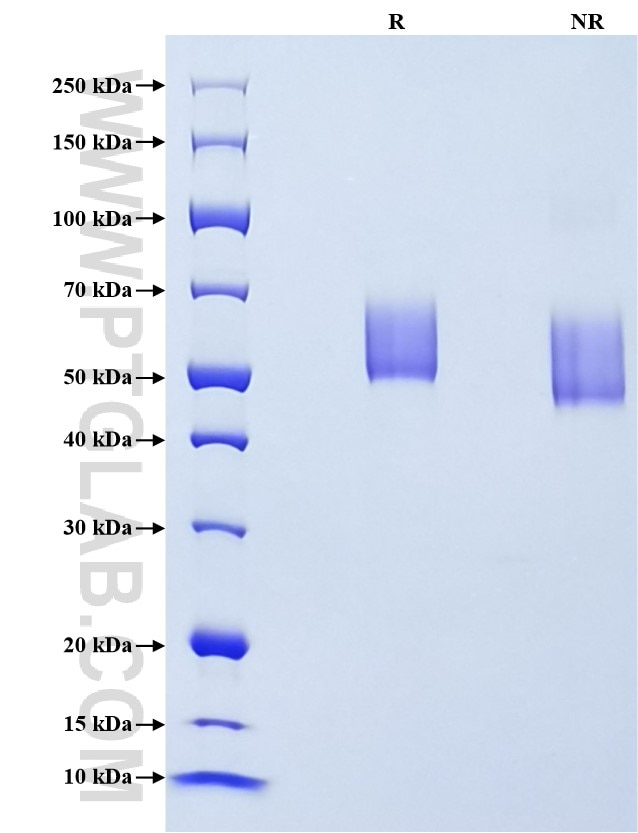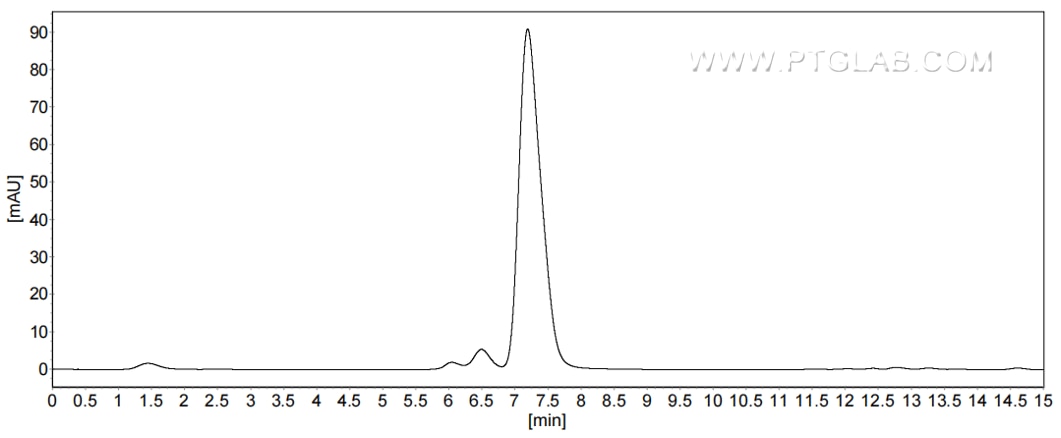Recombinant Human SIRP alpha/CD172a protein (His Tag)(HPLC verified)
Species
Human
Purity
>90 %, SDS-PAGE
>90 %, SEC-HPLC
Tag
His Tag
Activity
not tested
Cat no : Eg0625
Validation Data Gallery
Product Information
| Purity | >90 %, SDS-PAGE >90 %, SEC-HPLC |
| Endotoxin | <0.1 EU/μg protein, LAL method |
| Activity |
Not tested |
| Expression | HEK293-derived Human SIRP alpha protein Glu31-Arg370 (Accession# P78324-1) with a His tag at the C-terminus. |
| GeneID | 140885 |
| Accession | P78324-1 |
| PredictedSize | 41.7 kDa |
| SDS-PAGE | 50-70 kDa, reducing (R) conditions |
| Formulation | Lyophilized from 0.22 μm filtered solution in PBS, pH 7.4. Normally 5% trehalose and 5% mannitol are added as protectants before lyophilization. |
| Reconstitution | Briefly centrifuge the tube before opening. Reconstitute at 0.1-0.5 mg/mL in sterile water. |
| Storage Conditions |
It is recommended that the protein be aliquoted for optimal storage. Avoid repeated freeze-thaw cycles.
|
| Shipping | The product is shipped at ambient temperature. Upon receipt, store it immediately at the recommended temperature. |
Background
SIRP Alpha, also known as CD172a or SHPS-1, is a transmembrane glycoprotein that belongs to the SIRP family. SIRP Alpha is a receptor with immunoreceptor tyrosine-based inhibition motifs in its cytoplasmic domain expressed by myeloid cells, including monocytes, macrophages, granulocytes, and a subset of dendritic cells. After activation of SIRP Alpha, Src homology 2 domain-containing protein tyrosine phosphatase-1 (SHP-1) is recruited and regulates receptor tyrosine kinase coupled signaling, participating in the regulation of phagocytosis and polarization of macrophages. SIRP Alpha binds to CD47, a receptor present on all cells (and frequently overexpressed in cancer cells), and this interaction provides a ‘do-not-eat-me’ signal to prevent phagocytosis.
References:
1. Sarfati M, et al. (2008) Curr Drug Targets. 9(10):842-50. 2. Barclay AN, et al. (2014) Annu Rev Immunol. 32:25-50. 3. de Vos AF, et al. (2020) Nat Immunol. 21(6):601-603. 4. Shen Q, et al. (2022) Front Immunol. 13:865579.


